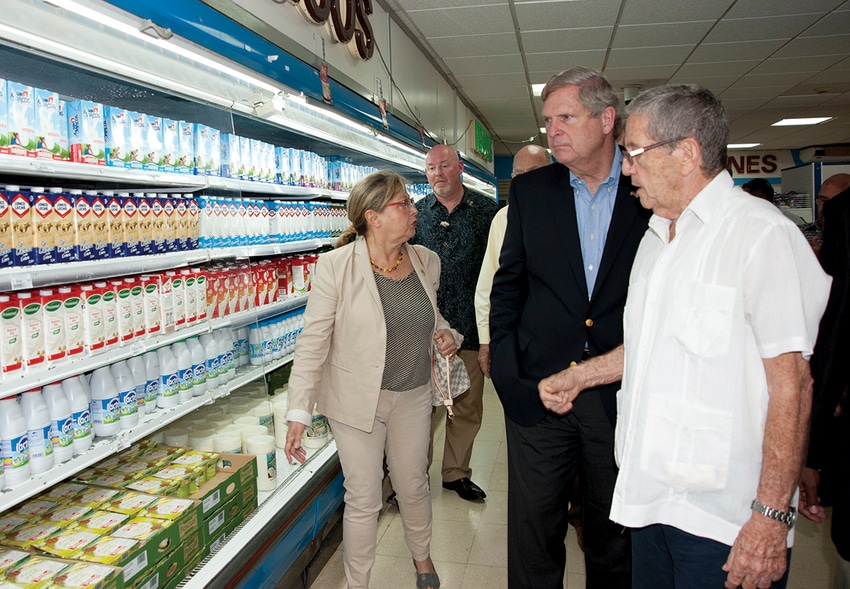November 15, 2015

How much rice could the United States sell Cuba if all the political, financial and other hurdles that have brought U.S. rice shipments to the island to a standstill in recent years were permanently removed?
That’s been a subject of considerable speculation in the U.S. rice community since President Obama and President Raul Castro announced the United States and Cuba would restore full diplomatic ties last Dec. 17.
Most rice industry members know a number of obstacles such as the 50-plus-year-old trade embargo against Cuba and restrictions on providing credit to finance Cuban purchases have to be removed. But what happens if those are cleared and shipments of U.S. rice begin arriving in Cuban ports again?
“If the U.S. exported the same amount of rice it did in the late 1950s and 1960s – around 150,000 to 160,000 tons – Cuba would be the seventh largest U.S. rice market today,” says Nathan Childs, senior agricultural economist with the USDA’s Economic Research Service.
Dr. Childs, who has been analyzing the U.S. and global rice markets for more than 20 years, discussed the outlook for U.S. and Cuba trade, during a University of Arkansas Systems Division of Agriculture Food and Agribusiness Webinar. Stephen Zahniser, a USDA economist specializing in trade with Mexico, was also a presenter.
After the passage of the Trade Sanctions Reform and Export Enhancement Act of 2000, the U.S. shipped from 150,000 to 175,000 tons, mostly of milled, rice to Cuba a year until 2008 when exports peaked and began to decline. Most of the shipments were of milled rice.
U.S. rice exports fading away
According to Zahniser, Cuba was never enthusiastic about importing products from the U.S. after nearly 40 years of the trade embargo. Then the U.S. Treasury Department tightened restrictions on extending credit to Cuba, and imports of U.S. rice and other products gradually began to fade away.
Now most of Cuba’s rice imports come from Vietnam nearly half a world away, although U.S. rice is considered to be of higher quality and would take much less time to reach Cuban ports than the Vietnamese.
“Many of you might remember the U.S. was the largest rice exporter until the early 1980s and the second largest for a number of years,” Dr. Childs notes. “But Asian exporters have overtaken the U.S. and the U.S is now the fifth largest rice exporting country. And, although global trade is increasing, the U.S. share of global trade is declining.
“The U.S. exports about half its crop each year. That's true about the South and California. Long-grain is usually 70 percent of shipments so the bulk of U.S. exports are that long-grain from the south.”
Rough rice makes up a third of U.S. exports. “The U.S. is the only major exporter that ships rough rice out of the region. Some of the South American exporters will ship rice locally. Cambodia will ship it into Vietnam. But the major Asian exporters do not ship rough rice out of the region.”
Latin America largest market
Latin America is the largest market for U.S. rice, taking more than half of U.S. exports and more than 70 percent of southern long-grain shipments. Mexico, Central America, Venezuela, Colombia are the largest markets for the U.S. rice in Latin America.
In the Southeast Asian import market, Indonesia, Philippines and Malaysia, “the U.S. is not priced competitive and ships very little rice,” says Dr. Childs. The U.S. ships very little rice to South Asia which actually is mostly countries that export rice.”
The United States also has lost share in Sub-Saharan Africa, which is currently the largest rice importing region in the world. “It's absolutely the largest – despite the fact that production has been increasing,” says Childs. “It's growing consumption in Sub-Saharan Africa.
“And to East Asia, almost all U.S. sales are the WTO sales. And that's almost all California rice. That's going to be Japan, Taiwan, South Korea and little bit to Hong Kong. But it's not part of WTO. Again, most of U.S. shipments to East Asia, medium grain California.”
The U.S. faces strong competition in the Middle East from Asian and South American suppliers, and U.S. imports to Iraq and Iran, two large buyers in the Middle East, are volatile and hard to predict “They come in and buy rice; then they go out,” says Childs.
500,000-ton market
“What I'm leading to is that a 500,000- ton market in nearby Cuba with Cuba mostly taking milled rice would be very beneficial to the U.S. rice industry,” he notes.
The U.S. has a lot of advantages in the Cuban market, a market it once dominated, says Childs. Shipping is probably about two days from the Gulf or less, compared to more than 30 days for Asian suppliers.
“I think some of the Asian shipments can be up to 40, 45 days. As such, the U.S. can ship small amounts compared to the Asian shipments, which will be well over 25,000 tons. And shipping small amounts reduces storage needs and financial outlays. The U.S can ship to smaller ports in the north which are closer to some consumers instead of having to go to deep water.”
Cubans have a long history of preferring high quality U.S rice over lower priced Asian rice – if they have the income to buy it, says Childs. “And the U.S. sells rough, brown and milled rice while Vietnam, the major supplier now to Cuba, exports only milled rice.”
There are disadvantages, including the higher prices for U.S. rice compared to Vietnam and other rice-producing countries in Asia. Vietnam has been as much as $220 per ton lower than U.S.
“With Thailand the U.S. is pretty much a solid $200 a ton higher,” says Dr. Childs. “U.S. price quotes now are above Brazil but the U.S. has typically been quite competitive with Brazil and Argentina.”
To view the video presentation by Dr. Childs, visit http://www.uaex.edu/farm-ranch/economics-marketing/food-agribusiness-webinars/posts/10-28-15-us-cuba-agricultural-trade-zahniser-childs.aspx.
About the Author(s)
You May Also Like






